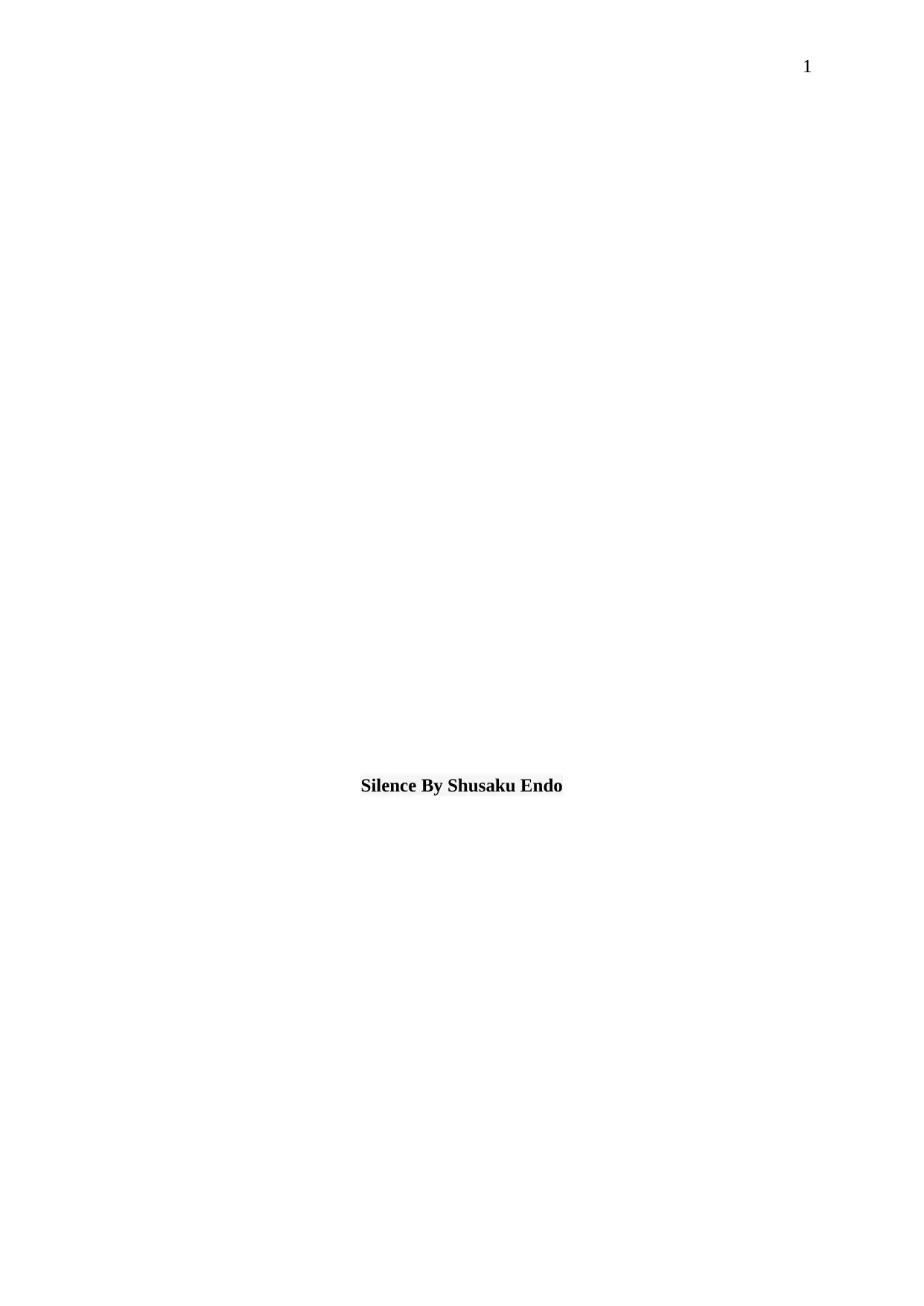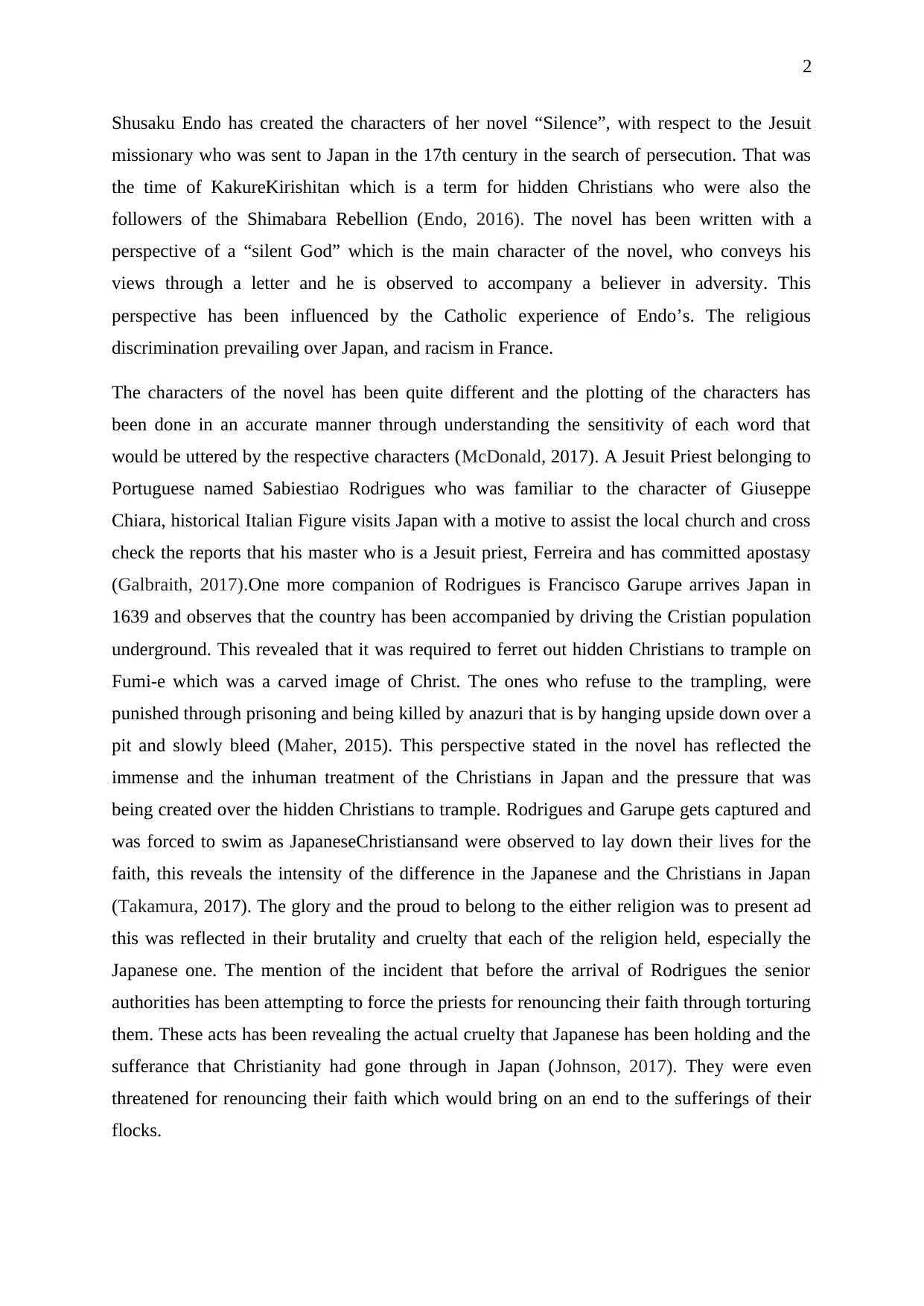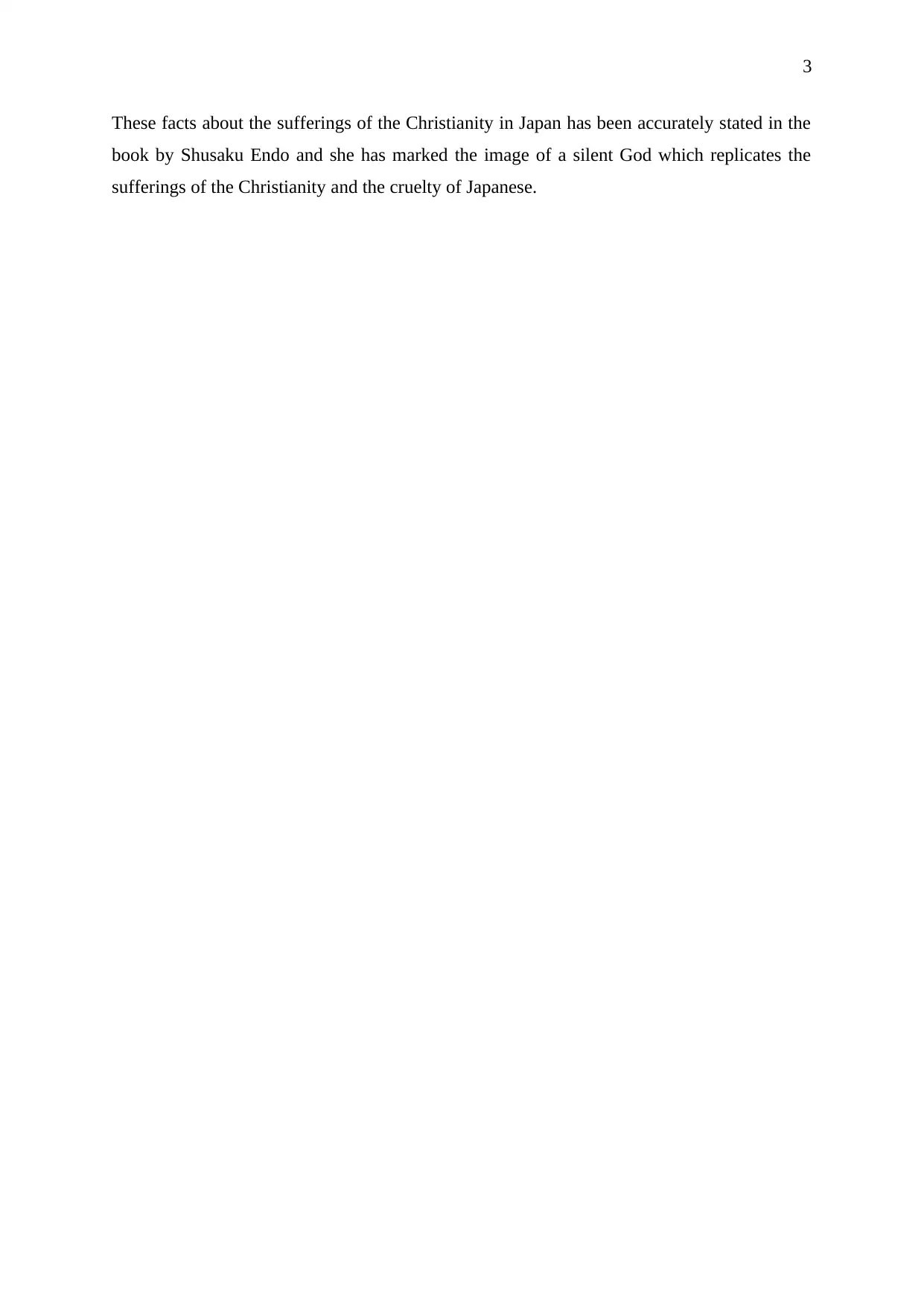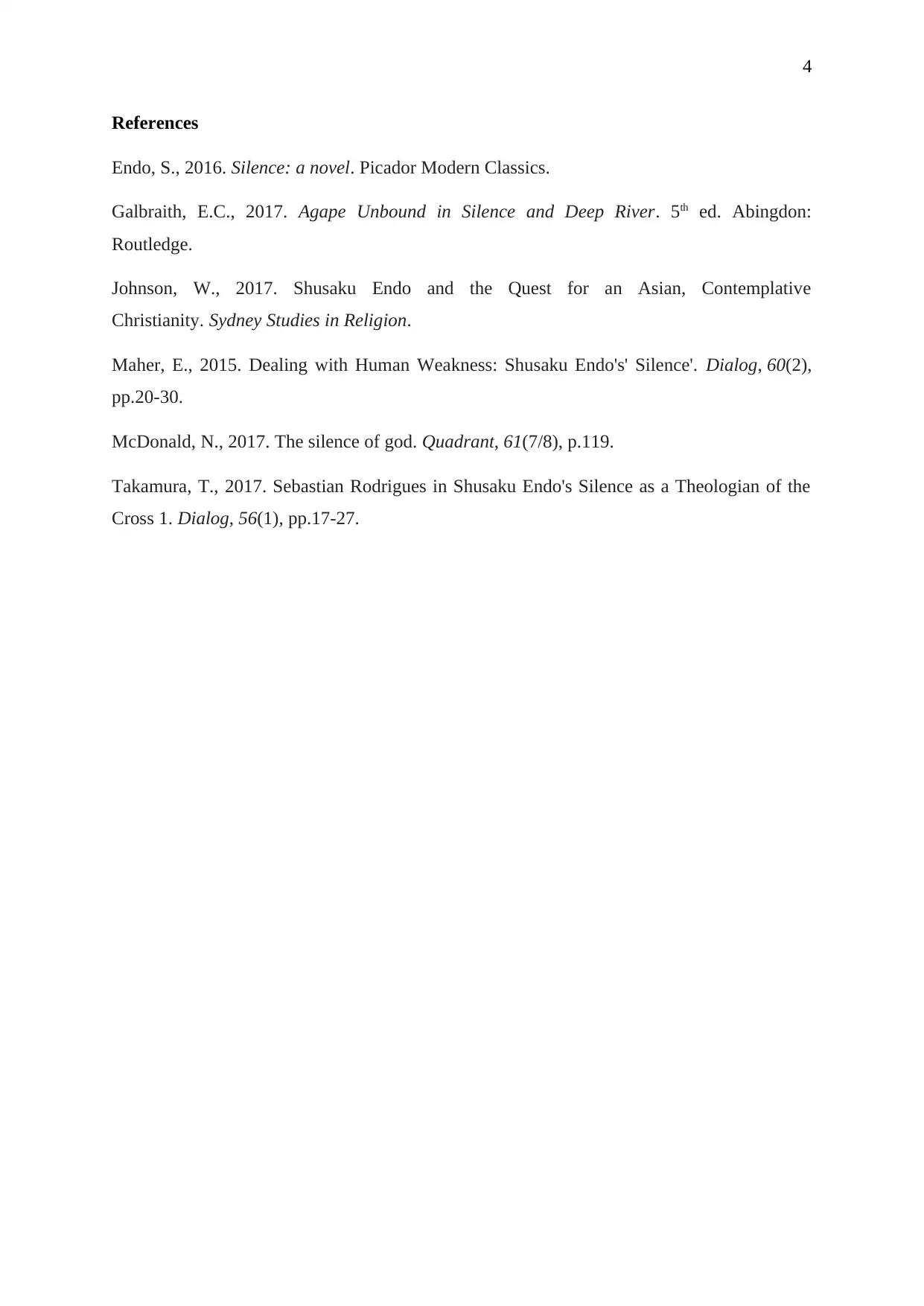Silence by Shusaku Endo: Examining Themes of Faith and Suffering
VerifiedAdded on 2023/01/19
|4
|692
|92
Essay
AI Summary
This essay analyzes Shusaku Endo's novel, "Silence," focusing on the historical context of 17th-century Japan and the persecution of Christians, specifically the Kakure Kirishitan. The essay explores the experiences of Jesuit missionaries, such as Rodrigues and Garupe, and their struggles with faith and the concept of a "silent God" in the face of extreme adversity. It examines the religious discrimination, the practice of Fumi-e, and the brutal treatment of Christians by the Japanese authorities. The analysis highlights the characters' motivations, the themes of suffering, apostasy, and the clash between religious beliefs and cultural practices. The essay also references key academic sources to support its arguments, providing a comprehensive overview of the novel's central themes and historical significance.
1 out of 4







![[object Object]](/_next/static/media/star-bottom.7253800d.svg)